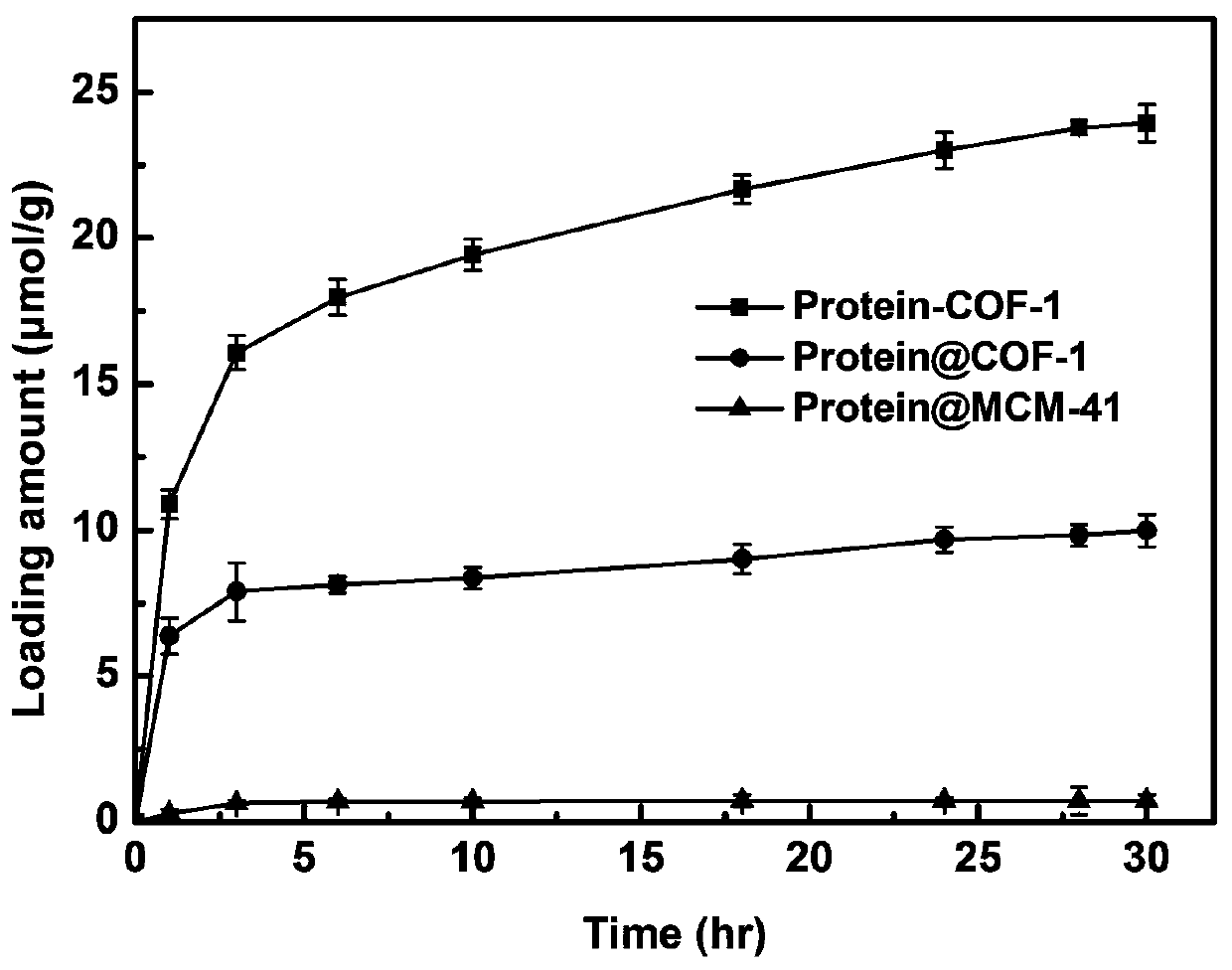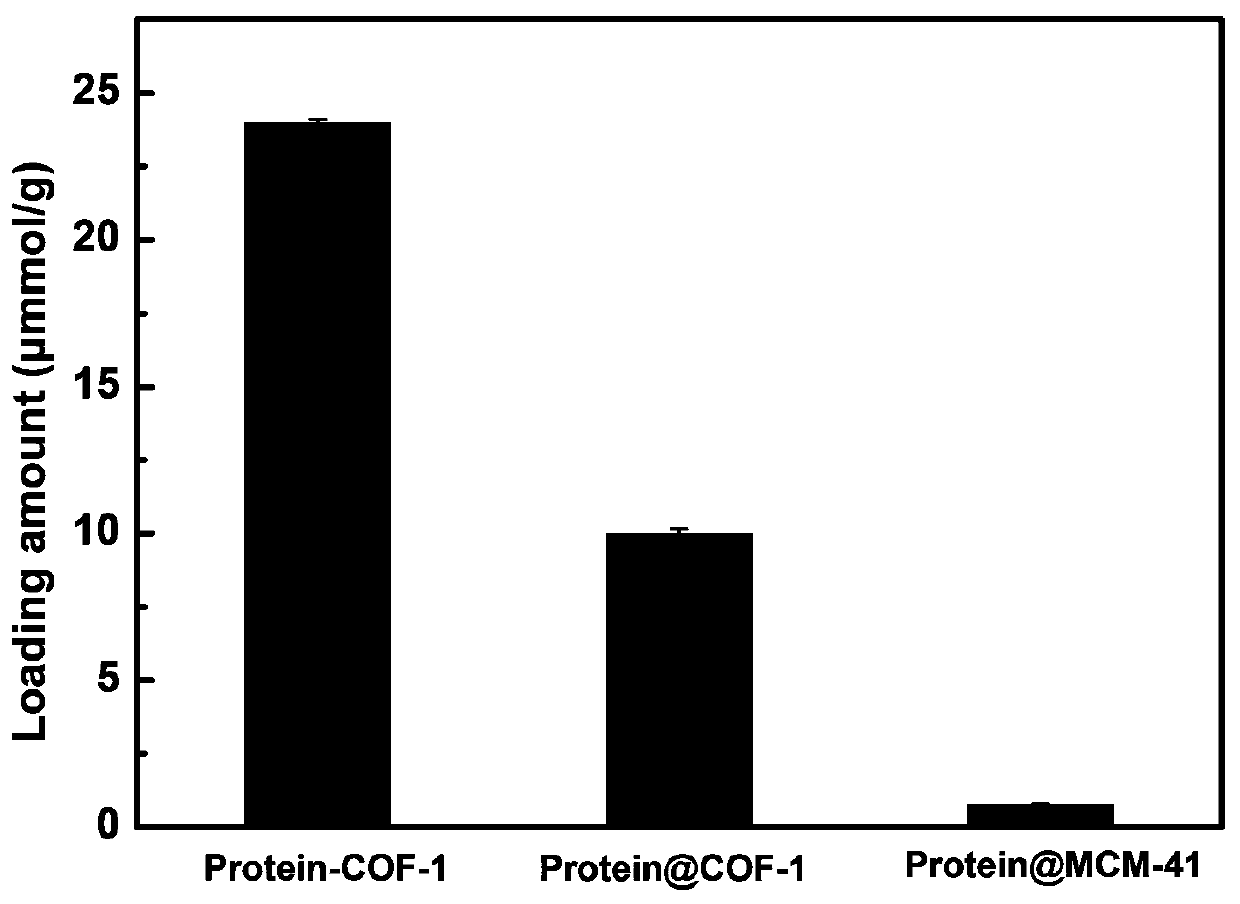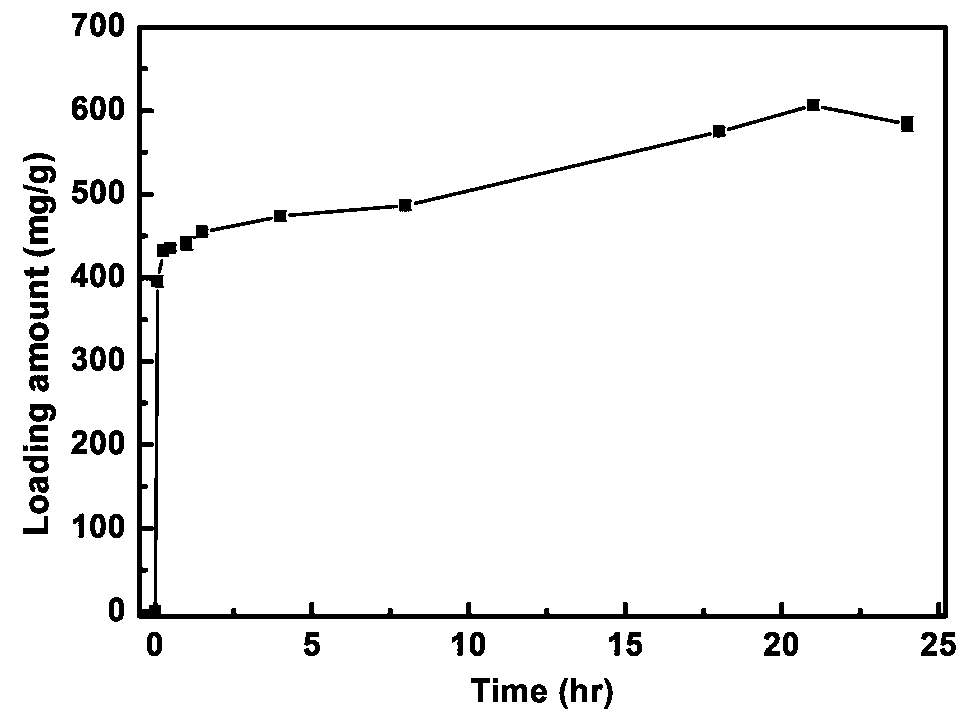Chromatographic stationary phases prepared by taking porous frame material as matrix and used for chiral separation
A porous framework and chiral separation technology, applied in the field of chromatographic chiral separation, can solve problems such as poor stability, easy leakage of chiral resolving agent, and low loading rate of chiral resolving agent
- Summary
- Abstract
- Description
- Claims
- Application Information
AI Technical Summary
Problems solved by technology
Method used
Image
Examples
Embodiment 1
[0048] The synthesis of the covalent organic framework material COF-1 used for chemically bonding a chiral resolving agent, the specific implementation steps are as follows:
[0049]Weigh the ligands 1,3,5-tris-(4-aminobenzene)triazine (TAPT 0.10 mmol) and pyromellitic dianhydride (PMDA 0.15 mmol) into thick-wall heat-resistant glass tubes (o.d. × i.d = 10 × 8 mm 2 ), then add 0.5 mL of mesitylene, 0.5 mL of N-methylpyrrolidone and 0.05 mL of isoquinoline, and then quickly freeze in liquid nitrogen, then vacuumize, and then seal the tube with a hydrogen oxygen machine flame. The sealed glass tube was placed in an oven at 200° C. for 5 days to obtain COF-1 as a yellow solid product.
[0050] Solvent Activation of Porous Framework Material COF-1
[0051] The obtained solid was washed several times with anhydrous tetrahydrofuran until the supernatant was colorless, and then extracted with 100 mL of anhydrous tetrahydrofuran for 24 hours. The obtained yellow solid was activated ...
Embodiment 2
[0052] Example 2: Chemical bonding of enzymes with covalent organic framework material COF-1 as a carrier
[0053] Activation of carboxylic acids in covalent organic framework material COF-1
[0054] Weigh 10 mg COF-1 into a 20 mL glass reaction vial, then add an equivalent amount of 1-ethyl-3-(3-dimethylaminopropyl) carbodiimide and N-hydroxysuccinimide Amine-based 2-morpholineethanesulfonic acid buffer solution (MES) 5 mL, after shaking on a shaker at room temperature for 2 hours, filter COF-1, and then wash 3-5 times with 5 mL 0.1M MES buffer solution of pH 6.0 , and then dried at room temperature.
[0055] Activated COF-1 chemically bonded enzyme
[0056] Weigh 10 mg of activated COF-1, add it to a 20 mL glass reaction vial, then add 2 mL of MES buffer solution containing 3 mg / mL enzyme to the vial, and shake on a shaker at 37 °C. as attached figure 1 At intervals as shown, the ultraviolet absorption of the supernatant was tested to calculate the amount of enzyme loade...
Embodiment 3
[0059] Example 3: Chemical Bonding of Vancomycin Using Covalent Organic Framework Material COF-1 as a Carrier
[0060] Activated COF-1 chemically binds vancomycin
[0061] Weigh 5 mg of activated COF-1, add to a 10 mL centrifuge tube, then add 2 mL of 5 mg / mL vancomycin aqueous solution to the centrifuge tube, and shake on a shaker at 37 °C. as attached image 3 At intervals as shown, the ultraviolet absorption of the supernatant was tested to calculate the amount of vancomycin loaded on the material, and the chemical bond immobilization curve of COF-1 to vancomycin was drawn.
PUM
| Property | Measurement | Unit |
|---|---|---|
| size | aaaaa | aaaaa |
Abstract
Description
Claims
Application Information
 Login to View More
Login to View More - R&D
- Intellectual Property
- Life Sciences
- Materials
- Tech Scout
- Unparalleled Data Quality
- Higher Quality Content
- 60% Fewer Hallucinations
Browse by: Latest US Patents, China's latest patents, Technical Efficacy Thesaurus, Application Domain, Technology Topic, Popular Technical Reports.
© 2025 PatSnap. All rights reserved.Legal|Privacy policy|Modern Slavery Act Transparency Statement|Sitemap|About US| Contact US: help@patsnap.com



